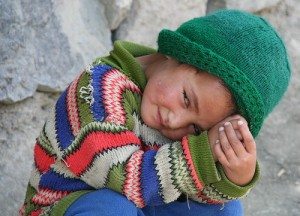 It’s often said that one of our missions as journalists is to give voice to the voiceless. But if you look at the stories we produce, you won’t often hear those voices. For instance, a lot of stories about children or issues that affect children’s issues are told by adults.
It’s often said that one of our missions as journalists is to give voice to the voiceless. But if you look at the stories we produce, you won’t often hear those voices. For instance, a lot of stories about children or issues that affect children’s issues are told by adults.
Listen closely. How often are the voices in those stories those of bureaucrats, officials, reporters, sometimes parents, rarely kids?
NewsLab offers the following suggestions for including the voices of children in your stories.
Seek Children Out
- Look for children who are directly involved in the issue you are covering. Talk to them in their own environment, where they are most comfortable.
- Include children in everyday stories, not just stories “about” children’s issues. Consider what perspective they might offer. In an election year, for instance, cover an elementary school student government election, explaining what motivates the candidates and voters. Are their parents and teachers that engaged? Why not?
- Look down and look behind you when covering breaking news. Children often provide a frank and fresh assessment of what’s happening, not to mention great natural sound.
- Establish a children’s advisory group to respond to what they see on the air and to suggest stories for coverage. You might even let them report a story or two themselves.
Find Their Level
- Spend time ahead of time letting children get used to your presence. Hang around, put the camera down. Keep your notebook and tape recorder in your bag. [Or let the child play with the mic and record themselves, one commenter suggests, to make them more comfortable.]
- Listen. Listen more than you talk. Ask fewer questions than you might of an adult. Let the child fill the silence.
- Crouch or kneel when talking to little kids. Don’t stand above them and put a stick mic in their faces.
- Give more of yourself than you would in an ordinary interview. Answer their questions.
- Avoid asking kids their opinions about issues and policies, even those that affect them directly. Ask instead about their own personal experiences. For instance, have kids describe what they eat for lunch at school, rather than asking what they think about the new school lunch program.
Write to Sound
- Match your writing style to the children’s voices. If your story includes a lot of sound from young children, keep your own language simple and your sentences short. Your track should not become a speedbump, slowing the story down.
- Use more sound than you might ordinarily, to help your audience get to know the child and help them see why they should care about what he or she says.
- Write less. Take your own voice out of the story to give more weight to the children’s voices.
Tread Gently
- Be clear about who you are and what you will do with what they say. Tell them more than once, to be sure they understand.
- Get permission from a parent or guardian before talking to the child. Leave a card so they can contact you later if they have any questions.
- Consider what harm you might cause just by talking to the child, even if you don’t air the interview.









3 Comments
Some of the most important interviews I”ve ever done for radio were with children. They profoundly changed my view of the story or issue.
One thing I always, always did is let them play with the mic at the beginning, recording whatever sounds they wanted, holding it themselves. I found it helped them to more calm for the “real interview” and sometimes gave me great sound.
I also have let children “interview” their friends and siblings — also great sound.
At the end of an interview with any child, I always asked if they had anything else they wanted to say, about what we’d talked about, or about anything at all. I have gotten some amazing clips from that question.
My favourite child interview was with a little girl who was her school’s star track runner. I asked what she was thinking when she ran, what the words were in her head. She thought about it, and then said, “I think, ‘Faster. For Daddy. Faster. For Daddy.’ ” Her father was a former runner and a parapeligic.
What a great example, Cin. Thanks for your tips, especially the one about letting kids play with the equipment. I’ll add it to the list!